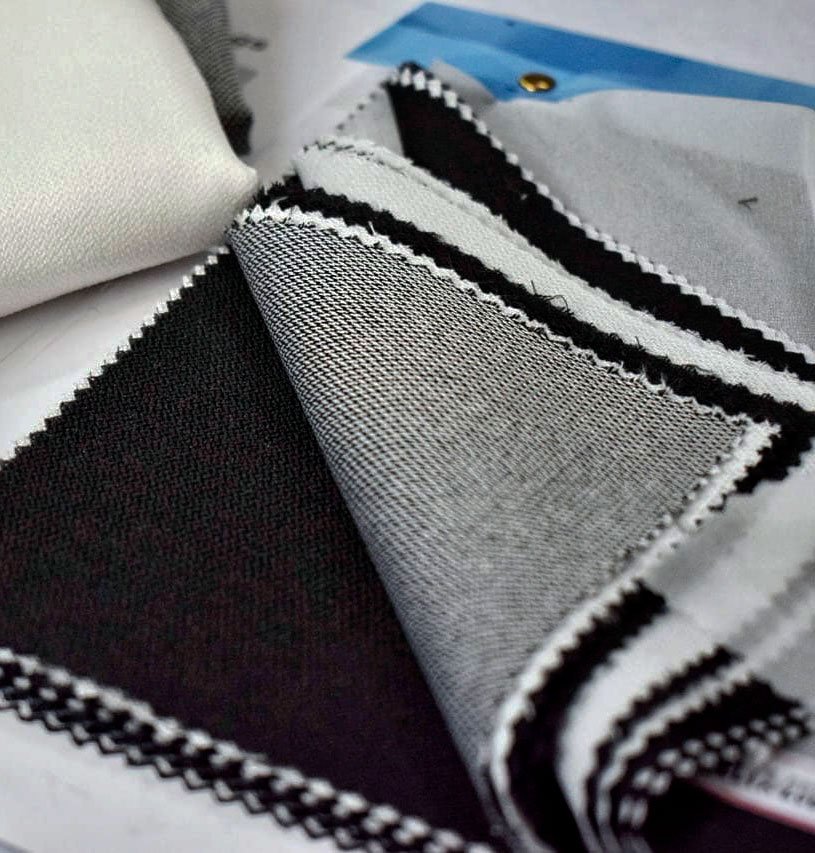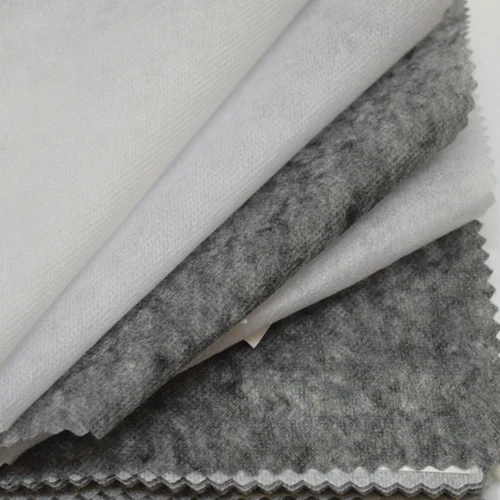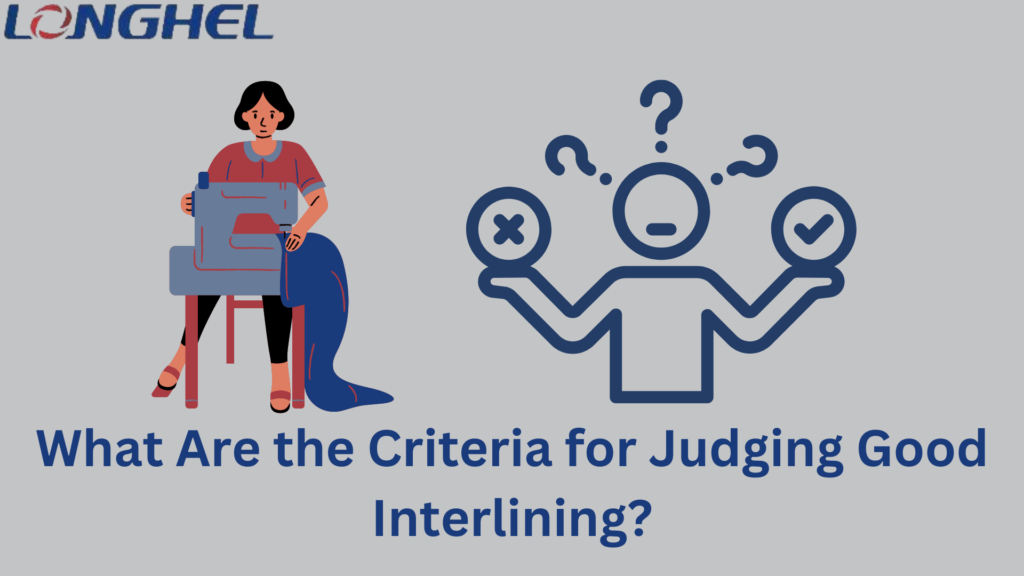Introduction
Choosing the right interlining is important for ensuring clothes look good and last long. Interlining is the hidden layer between the fabric that gives clothes their shape and structure. But how do you know if the interlining is good? Knowing what to look for is key.
First, think about the material. The right mix of fibers, like cotton or polyester, affects how well the interlining works. It should be strong enough to handle washing and everyday wear without losing its shape.
How the interlining sticks to the fabric is also important, especially for fusible types. It needs to bond well to keep the fabric in place. The interlining should also be flexible and soft, providing support without stiffening the clothes.
Finally, it should match the main fabric in weight, thickness, and color. This ensures a smooth and professional finish. Understanding these points helps choose the right interlining for better, longer-lasting clothes.
Understanding Interlining
Interlining is an important part of making clothes. It’s a layer of fabric between the outer fabric and the lining. This hidden layer gives clothes their shape, structure, and support. Without interlining, garments wouldn’t have the neat, finished look that makes them appear well-made and professional.
There are different types of interlining, each designed for specific uses. Woven interlining is made from tightly woven fabric, offering strong support. This type is great for parts of the garment that need to be firm, like collars and waistbands.
Non-woven interlining, made by bonding fibers, is more flexible and often used with lighter fabrics. Knit interlining, made from knitted fabric, is stretchy and used in garments that need flexibility, like knitwear.
Interlining is commonly used in areas that need extra support, such as collars, cuffs, waistbands, and hems. It helps these parts keep their shape over time, even after multiple washes and wears.
Choosing the right interlining is crucial. The wrong choice can make a garment look and feel wrong. For example, using a thick interlining with a light fabric can make the garment bulky. On the other hand, using a thin interlining with a heavy fabric might not provide enough support, causing the garment to lose its shape.
When selecting interlining, consider the fabric type, the garment design, and how you want the finished product to look. Lightweight fabrics usually need lighter interlining, while heavier fabrics require stronger support. The interlining should match the weight, thickness, and color of the outer fabric for a smooth, professional finish.

What Are the Criteria for Judging Good Interlining?
Interlining is a crucial part of making clothes. It’s a fabric layer placed between the outer fabric and the lining. This hidden layer helps give clothes their shape, support, and structure. Picking the right interlining is important because it can change how the clothes look, feel, and last over time. Here are the key things to look for when judging good interlining.
Material
The type of material used in the interlining is the first thing to check. Interlining can be made from different materials like cotton, polyester, or a mix of both. Each material has its own benefits.
- Cotton: Cotton is soft and breathable, making it comfortable. However, cotton can shrink and wrinkle, so it’s important to shrink cotton interlining before using it.
- Polyester: Polyester is strong and doesn’t shrink or wrinkle easily. It’s good for clothes that need to last a long time. However, polyester is not as breathable as cotton, which may not work well for all types of clothing.
- Blended: A mix of cotton and polyester combines the good qualities of both materials. It offers a balance of comfort and strength, making it useful for many types of clothes.
Durability
Durability means how long the interlining will last. A durable interlining should stay in good shape through regular wear, washing, and ironing without losing its support.
- Strength: Good interlining should not tear easily during cutting, sewing, or daily use.
- Washability: The interlining should stay in good condition after many washes. It shouldn’t shrink, wrinkle, or stop sticking to the fabric.
- Long-lasting: Over time, clothes go through a lot of use. Good interlining should help the clothes keep their shape, even after being worn and washed many times.
Sticking Quality
For fusible interlining, which sticks to the fabric with heat and pressure, the quality of the sticking is very important. How well it sticks to the fabric affects how well it supports the clothes.
- Strong Bond: The interlining should stick firmly to the fabric and not peel off, even after many washes and ironing. Weak bonding can cause bubbles or wrinkles in the fabric, ruining the look of the clothes.
- Even Sticking: The glue on the interlining should be spread evenly to make sure it sticks well all over. If the glue is not even, some parts of the clothes might lose their shape.
- Right Temperature: Good fusible interlining should stick well at a temperature and pressure that won’t harm the outer fabric.
Flexibility and Feel
The interlining should feel good and move easily with the fabric. It should provide support without making the clothes stiff or uncomfortable.
- Softness: The interlining should be soft so it doesn’t irritate the skin. This is especially important for clothes worn close to the body, like shirts.
- Flexibility: The interlining should allow the fabric to move naturally, without making the clothes feel stiff. This is important for clothes that need to allow movement, like sportswear.
- Nice Drape: The interlining should help the fabric hang nicely. It should not make the fabric too stiff or too limp but should help it flow smoothly.
Compatibility with Fabric
The interlining needs to match the outer fabric in weight, thickness, and color. This ensures the clothes have a smooth finish and that the interlining doesn’t show through or change how the fabric looks.
- Matching Weight: The interlining should match the weight of the outer fabric. Using heavy interlining with lightweight fabric can make the clothes bulky while using light interlining with heavy fabric might not provide enough support.
- Color Match: The interlining should not change the color of the outer fabric, especially with light-colored fabrics where any color change would be noticeable.
- No Shrinking: The interlining should shrink at the same rate as the outer fabric. This helps the clothes keep their shape after washing without puckering or wrinkling.

What Are Common Mistakes in Selecting Interlining?
Not Matching Interlining with Fabric
One of the most common mistakes is not choosing the right interlining for the fabric. Using a heavy interlining with a light fabric can make the garment bulky and uncomfortable. Conversely, using a light interlining with a heavy fabric might not provide enough support, causing the garment to lose its shape.
Ignoring Shrinkage Factor
Another frequent mistake is ignoring the shrinkage factor. If the interlining shrinks at a different rate than the fabric, it can lead to puckering or wrinkling after washing. To prevent this, it’s important to pre-shrink the interlining or select a material with similar shrinkage properties as the fabric.
Overlooking the Feel of the Interlining
The feel of the interlining is crucial, especially for garments worn close to the skin. A stiff or rough interlining can make the garment uncomfortable. Ensuring that the interlining is soft and comfortable will improve the overall wearability of the garment.
Selecting Based Solely on Cost
Choosing interlining based solely on price is another common mistake. While cheaper options may seem cost-effective initially, they might not offer the same quality or durability. Investing in good-quality interlining ensures the garment lasts longer and maintains its appearance.

What Are Some Case Studies/Examples of Interlining Selection?
Choosing the right interlining is important for making quality clothes. Here are some examples that show why proper interlining selection matters.
Example 1: Suit Jacket
The interlining is key to making high-quality suit jackets. A well-known manufacturer chose a woven interlining made of cotton and polyester for their suits. This mix provided both structure and flexibility. The interlining gave strong support, keeping the jacket looking sharp and well-tailored, even after many years.
The cotton-polyester blend also made the jacket durable and less likely to wrinkle. This choice resulted in a suit jacket that looked professional and was comfortable to wear for a long time.
Example 2: Women’s Blouse
A popular fashion brand had problems with the feel and fit of their women’s blouses. The original interlining was too stiff, making the blouses uncomfortable and causing them to hang poorly. After listening to customer feedback, the brand switched to a lighter, knit interlining.
This change made the blouses move more naturally with the body, improving both comfort and appearance. The softer interlining also made the blouses feel better, which led to happier customers and better sales.
Example 3: Dress Shirt
A dress shirt manufacturer used a non-woven fusible interlining for the collars and cuffs. The interlining needed to be stiff enough to keep these areas crisp but also strong enough to handle regular washing and ironing.
By choosing a high-quality, non-woven interlining, the manufacturer ensured that the collars and cuffs kept their shape without bubbling or peeling. This choice made the shirts more durable and appealing to customers who wanted long-lasting clothing.

Conclusion
Choosing the right interlining is key to making quality clothes. Look at the material’s durability and how well it sticks to the fabric. The interlining should match the weight and feel of the fabric. This ensures comfort and a good fit.
Think about shrinkage to keep the garment’s shape after washing. Good interlining should also be easy to sew. While cost is important, quality matters more for long-lasting, well-made clothes. By following these guidelines, garment makers can pick interlining that improves the overall quality. This leads to better, more comfortable clothes that satisfy customers.

